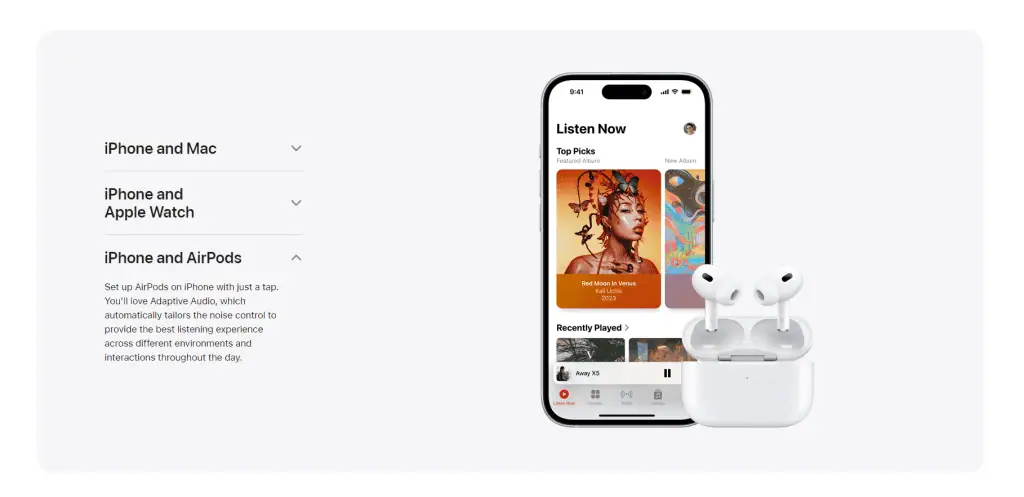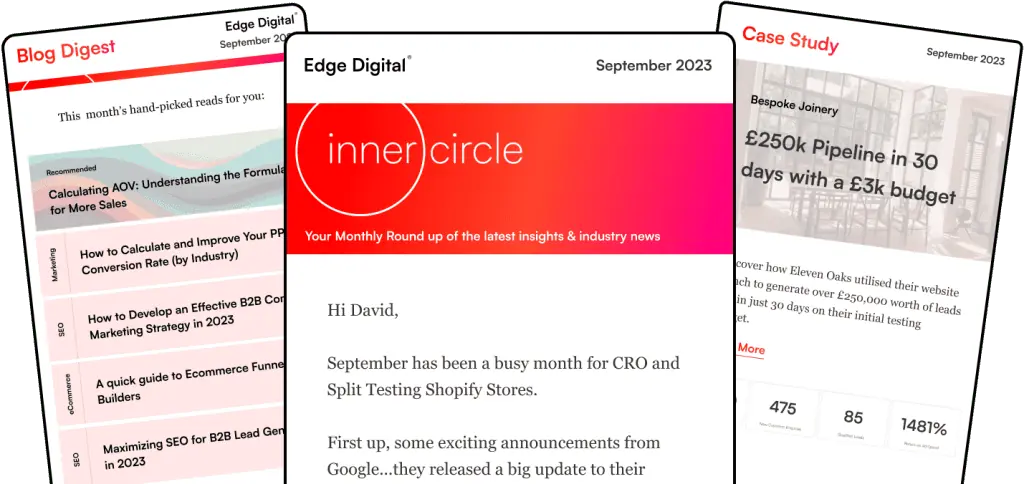In today’s competitive business landscape, customer experience (CX) has become the differentiating factor that can make or break a company. Focusing on customer-centricity can help reduce customer churn and contribute to long-term success. By prioritizing customer-centricity and leveraging technology, organizations can elevate their CX and secure loyal customers. Are you ready to explore the world of CX and learn how successful companies are mastering the art of exceptional customer service?
In this comprehensive guide, we will dive into the meaning of CX, its key components, and the role technology plays in shaping memorable experiences. We will also discuss the connection between employee and customer experiences, and share real-world examples of companies that excel in providing outstanding CX. So, let’s embark on this journey and discover how you can transform your organization’s approach to customer experience, understanding the CX meaning and its implications for your business.
Key Takeaways
Customer Experience (CX) is the combination of all customer interactions with a brand, and now serves as an important business strategy.
CX involves journey mapping, touchpoints and expectations to maximize customer lifetime value.
Measuring and improving Customer Experience is essential for success. Key performance indicators such as NPS help identify areas for improvement while digital transformation allows businesses to provide tailored experiences that meet customers’ preferences & requirements.
Utilizing customer experience management tools is crucial for gathering insights and enhancing the overall customer experience.
Defining Customer Experience (CX)
Customer experience is the culmination of all interactions and touchpoints a customer has with a brand, both online and offline. It goes beyond simple customer satisfaction, connecting the dots between customer relationship management, customer lifetime value, and customer loyalty. A well-executed customer experience strategy can pave the way for increased customer advocacy and overall satisfaction, ensuring that the customer remains at the heart of your business.
Poor customer experience, such as a pharmacy turning down a man in his 80s for a COVID-19 vaccine, can lead to dissatisfied customers and significant financial losses for businesses. Therefore, it is crucial to prioritize excellent customer experience to foster business success and customer loyalty.
The concept of CX has evolved over the years, adapting to the ever-changing landscape of consumer expectations and technological advancements. From its early beginnings as a reactive approach to addressing customer concerns, CX has transformed into a proactive and strategic endeavor that seeks to anticipate and exceed customer needs, ultimately creating a positive experience for every interaction.
What is CX?
At its core, customer experience (CX) is an umbrella term for the overall perception of a brand after engaging with it, incorporating all customer touchpoints and experiences both on and offline. This includes user experience (UX), which encompasses users’ interactions with an organization, as well as customer relationship management and other points of customer interaction. The four components of CX are brand, product, price, and service, with the customer service team playing a crucial role in delivering exceptional service.
Identifying areas of improvement is vital in optimizing customer experiences and creating satisfied customers. Customer insights, derived from the analysis of both quantitative and qualitative customer data, facilitate the recognition of specific touchpoints that customers are encountering difficulty with and what hinders them from recommending a product to others.
Some methodologies employed to gather customer feedback include:
Voice of the Customer (VoC), which captures insights throughout the entire customer journey
Surveys and questionnaires
Social media listening and sentiment analysis
Additionally, customer experience management tools are essential for gathering and analyzing customer feedback effectively.
By utilizing these methods, businesses can gain valuable insights and make informed decisions to enhance the customer experience.
The Evolution of CX
Customer experience (CX) has progressed over time from its initial stages to its current importance in business strategy, with a focus on maximizing customer lifetime value. In CXM, a deep understanding of customers paves the way for cross-functional collaboration and a customer-centric environment, thus enhancing satisfaction, loyalty, and advocacy. The term “UX” eventually becomes inadequate to accurately portray the experience that companies strive to give their customers.
The history of UX traces back to Bell Labs, who pioneered the transition to designing for interactive systems in 1945. By the 1950s, Bell Labs had already taken UX design into consideration when creating the touchtone keypad. They wanted the keypad to be as user-friendly as possible. User Experience focuses on incorporating the user’s requirements into every phase of the product lifecycle.
In large organizations, sales, customer support, engineering, marketing, finance, and legal divisions are typically involved in Customer Experience initiatives.

Key Components of Customer Experience
Delving into the essential elements of customer experience, we find three key components: customer journey mapping, customer touchpoints, and customer expectations.
Customer journey mapping is the process of comprehending and recording the customer journey from the customer’s point of view, encompassing the entire customer lifecycle. Customer journey maps play a crucial role in visualizing and improving the customer journey by identifying every touchpoint where a customer engages with a company, including word-of-mouth, email, reading reviews, social media posts, and more. Touchpoints, on the other hand, refer to the various points of contact between a customer and a brand, which can impact the overall customer experience.
Customer expectations are the standards that customers have for a product or service, typically formed based on their prior experiences, the expectations of others, and the promises made by the company. Delivering a positive customer experience hinges on understanding and meeting these expectations, as it can bolster customer loyalty and advocacy.
Customer Journey Mapping
Customer journey mapping is a visual representation of the customer’s interactions with a brand, pinpointing areas of difficulty and potential for enhancement. Customer journey maps help businesses understand the path a consumer takes with a brand, from initial awareness to the final stage of purchase and post-purchase interactions. It enables businesses to assess the impact of any changes to customer touchpoints, comprehend customers’ current experience, and map out an ideal journey to drive better business results. Journey mapping can be conducted through various methods, such as diary studies, which involve longitudinal feedback and reflections from the same participants over a prolonged period.
A study by McKinsey revealed that customer satisfaction with health insurance increases by 73 percent when the journey works optimally, as opposed to when only touchpoints are effective. This highlights the importance of understanding the entire customer journey and implementing improvements to address pain points and create a seamless experience for customers.
Customer Touchpoints
Customer touchpoints encompass any direct or indirect contact a customer may have with a brand, including:
Website visits
Customer service calls
Emails
Social media interactions
In-store visits
Coordination between various teams within the organization is crucial in enhancing customer experience. Sales and customer support teams can gather customer feedback to share with product engineers. This feedback can be used by engineers to improve existing features or develop new ones to address product deficiencies.
Subsequently, engineering must collaborate with marketing to construct messaging about the new feature and disseminate it to the market. Understanding and optimizing these touchpoints can provide valuable insight into customer behavior, enabling businesses to turn customers into loyal advocates.
Focusing on improving customer interactions at every touchpoint can help organizations gain a competitive advantage and increase customer loyalty.
Customer Expectations
Customer expectations refer to the anticipated or desired outcomes, experiences, and level of service that customers anticipate when interacting with a company or purchasing a product or service. These expectations can be impacted by factors such as:
Product quality
Customer service
Convenience
Personalization
Overall value
Fostering customer satisfaction and loyalty hinges on meeting and even surpassing customer expectations.
Understanding the needs and desires of their customers enables businesses to tailor their offerings and services, ensuring a positive experience and ultimately increasing the likelihood of repeat business and referrals. This customer-centric approach can help organizations achieve overall satisfaction and build long-lasting relationships with their customers.
Measuring and Improving Customer Experience
Measuring and improving customer experience is a crucial aspect of any organization’s CX strategy. By evaluating customer satisfaction and loyalty, businesses can identify areas for improvement and implement changes to deliver positive customer experiences. Reducing customer churn is a key goal of improving customer experience, as it directly impacts long-term business success. Employing guiding principles to maximize customer experience assessment and leveraging the essential building blocks for transforming or improving customer experience throughout an organization can lead to significant increases in sales conversion rates, decreases in service costs, and enhancements in customer satisfaction.
Understanding and acting upon the data collected through various CX metrics can help businesses to not only improve their existing customer experience but also attract new customers. Organizations can ensure long-term success and growth by proactively and continuously working towards enhancing the customer experience.
CX Metrics
CX metrics refer to key performance indicators employed to evaluate customer experience, including Net Promoter Score (NPS), Customer Satisfaction Score (CSAT), and Customer Effort Score (CES). These metrics are assessed by having customers rate their satisfaction with the goods or services received on a scale of 1-5. Monitoring these metrics allows businesses to gain insights into customers’ perceptions of their experience and identify areas for improvement.
CX metrics encompass UX metrics, indicating that the CX team is considering both higher-level metrics and UX metrics. Utilizing these metrics allows organizations to:
Develop a deeper understanding of their customers’ needs and preferences
Make data-driven decisions to improve their product offerings
Enhance the overall customer experience.
CX Strategies
CX strategies refer to the plans and approaches that a company implements to ensure positive and high-quality customer experiences. Some strategies to enhance customer experience may include forming a CX strategy, utilizing digital transformation, and cultivating a customer-centric atmosphere.
Digital transformation refers to the utilization of digital technologies to modify or create new business processes, culture, and customer experiences to align with changing business and market requirements.
A customer-centric culture is one that emphasizes the importance of the customer in all decisions and activities, focusing on understanding customer needs and delivering the highest quality customer experience.
The Role of Technology in Customer Experience
Technology is integral in facilitating customer experience, as it equips businesses with the necessary tools to manage and enhance customer interactions throughout the customer lifecycle. With the rapid advancements in technology, organizations can leverage various tools and platforms, including customer experience management (CEM/CXM) platforms, to gather customer data, analyze feedback, and implement improvements to enhance customer experience.
Digital transformation, for instance, facilitates businesses to provide tailored, immediate digital experiences that are in line with customers’ preferences and requirements. In addition, customer experience management (CEM/CXM) platforms are software solutions designed to help businesses collect customer data, analyze feedback, and implement improvements in order to improve customer experience.

Digital Customer Experience (DCX)
Digital Customer Experience (DCX) is the term used to describe the online and digital interactions between a customer and a brand, which are integral to creating a positive overall customer experience. An example of a company utilizing technology to enhance its DCX is a notable airline that developed a machine-learning system to:
Monitor and prioritize customers who may opt for a different carrier due to multiple flight delays or other issues
Establish this system within three months
Result in an 800 percent rise in customer satisfaction
Decrease churn for priority customers by 60 percent
Predictive CX platforms, which are comprised of three essential components – data collection, analytics, and action – are another example of how technology is shaping the world of digital customer experience. Leveraging these platforms enables businesses to gain insights into customer behavior and take actionable steps to enhance customer experience.
Customer Experience Management (CEM/CXM) Platforms
Customer Experience Management (CEM/CXM) platforms are software solutions that help businesses gather customer data, analyze feedback, and implement improvements to enhance customer experience. These platforms provide businesses with a deeper insight into customer needs and preferences, optimize customer service, and foster customer loyalty.
Customer experience management tools play a crucial role in these platforms by offering a diverse toolkit for digital customer experience, including top apps used within companies’ customer experience ecosystems.
However, the primary challenge associated with CEM/CXM platforms is the cost of implementation and maintenance. Additionally, there is a potential risk of data privacy and security issues.
Adopting and effectively utilizing CEM/CXM platforms enable organizations to:
Create a comprehensive view of the customer
Apply the gathered insights in a meaningful manner
Deliver personalized experiences
Improve customer satisfaction
Ultimately drive growth and success.
Customer Experience in Different Industries
Comprehending how different industries handle customer experience is significant, as customer requirements and expectations differ depending on the context. Each industry presents its own unique challenges and opportunities when it comes to customer experience, necessitating a customer-centric culture. For instance, the retail industry must prioritize offering a smooth and tailored shopping experience, whereas the hospitality industry must prioritize providing a memorable and enjoyable experience.
Examples of excellent customer experience in various industries include:
Amazon’s utilization of AI-powered customer service
Apple’s emphasis on providing a personalized experience
Marriott’s incorporation of technology to facilitate a more efficient and enjoyable stay

Apple make great use of CX and personalization throughout the customer journey.
Understanding the unique challenges and opportunities in their respective industries allows organizations to tailor their CX strategies, better serve their customers, and achieve business success.
The Connection Between Customer Experience and Employee Experience
There is a direct connection between customer experience and employee experience, which underscores the significance of having contented employees in providing superior customer service. Enhancing employee experience to cultivate a customer-centric culture can have a powerful effect. Empowering employees enables them to deliver the highest quality and most personalized service, which results in positive customer interactions and an improved customer experience.
A customer-centric culture is one where every employee is knowledgeable about the importance of customer experience and is dedicated to providing superior customer service. Investing in employee training and development, and fostering a positive work environment, can forge a strong connection between employee experience and customer experience, ultimately fostering happier customers and long-term success for businesses.
Real-World Examples of Great Customer Experience
Great customer experiences often result from companies that prioritize customer-centricity and continuously strive to exceed customer expectations. Companies such as Amazon, Apple, and Marriott are renowned for their exceptional customer experiences, employing strategies such as leveraging AI-powered customer service, focusing on personalized experiences, and incorporating technology to enhance their offerings.
Another example is Zappos, an online retailer known for its customer service company culture. Empowering employees to make decisions in the best interest of the customer has helped Zappos create an environment that fosters both employee and customer satisfaction. This focus on customer-centricity has helped the company achieve a high level of customer loyalty and advocacy.
Disney, a global entertainment brand, is another example of a company that has excelled in delivering exceptional customer experiences. By focusing on creating memorable moments for their guests, Disney has cultivated a loyal customer base that continually returns for the magical experience the brand provides. These examples showcase the power of prioritizing customer experience and the impact it can have on business success.
Summary
In conclusion, customer experience is the cornerstone of business success in today’s competitive landscape. By understanding the key components of CX, such as journey mapping, touchpoints, and expectations, organizations can develop effective strategies to enhance their customer experience. Leveraging technology, such as CEM/CXM platforms and digital transformation, businesses can gain valuable insights and implement improvements that lead to increased customer satisfaction and loyalty.
As we have seen through various real-world examples, prioritizing customer experience and fostering a customer-centric culture can significantly impact a company’s growth and success. By continuously striving to exceed customer expectations and investing in employee development, organizations can create memorable experiences that turn customers into loyal advocates. Embrace the power of customer experience and unlock the potential for long-lasting success in your business.
Frequently Asked Questions
What CX means in chat?
CX is an abbreviation used online to indicate a correction. It can be used to note typos or incorrect information in previous statements, such as tweets. CX is a useful tool for keeping conversations accurate and up-to-date. It can help to avoid misunderstandings and ensure that everyone is on the
What does CX mean in work?
Customer experience (CX) is the perception of customers’ experiences with a business or brand, throughout the customer’s journey. It encompasses all points of engagement, from marketing to sales to customer service, in order to make sure that customers are put first and their needs are served. CX is an important part of any business, as it helps to create a positive customer experience and build customer loyalty. Companies should strive to create a customer-centric culture, where customers are at the center of
What is the difference between customer experience (CX) and user experience (UX)?
UX focuses on a user’s interaction with a product or service, while CX encompasses the entire customer journey and relationship with an organization.
What are some common CX metrics used to measure customer experience?
Common CX metrics used to measure customer experience are Net Promoter Score (NPS), Customer Satisfaction Score (CSAT) and Customer Effort Score (CES).
How does technology impact customer experience?
Technology is essential in creating a positive customer experience, enabling businesses to manage and optimize interactions across the customer lifecycle.



